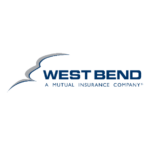Cheapest Low-Income Car Insurance In Minnesota 2025
Low-income drivers in Minnesota don’t have a government-provided car insurance program to turn to. However, the lowest rates can be found with Auto-Owners, averaging $70 per month.
We’ve saved shoppers an average of $600 per year on their car insurance.
For affordable car insurance in Minnesota, Auto-Owners stands out with rates beginning at $55 per month, especially beneficial for low-income drivers. Iowa doesn’t provide state-sponsored car insurance, so securing a private provider like Auto-Owners.
Cheap Low-Income Car Insurance In Minnesota 2025


Does Minnesota Have A Government-Sponsored Car Insurance Program For Low-Income Drivers?
No, Minnesota doesn’t have a government-funded car insurance program specifically for low-income drivers. However, all drivers in Minnesota must still carry at least the state-required minimum car insurance.
Minimum Car Insurance Requirements In Minnesota
To drive legally in Minnesota, you need at least $30,000 of bodily injury coverage per person, $60,000 per accident, and $10,000 for property damage. These minimums cover expenses for others if you cause an accident. Higher coverage amounts may be worth considering to avoid substantial expenses if damages go beyond basic limits.
Full Coverage Options
Full coverage insurance generally offers liability, collision, and comprehensive protection. Liability covers the cost of damages to others if you’re at fault, collision covers repairs for your own car after an accident, and comprehensive handles incidents like theft or weather damage. Full coverage is especially beneficial for financed or new cars, protecting against major costs.
Cheapest Low-Income Car Insurance For Families In Minnesota
Minnesota car insurance rates can vary with family circumstances. For instance, single parents may pay roughly $560 more per year than married couples, as they’re seen as higher-risk drivers. Teen drivers or multiple vehicles can also increase rates. Auto-Owners provides affordable coverage options for low-income families, with rates starting at $55 per month, or $660 per year.
| Company | Avg. 6 Mo. Premium | Avg. Monthly Premium |
| GEICO | $540 | $90 |
| Travelers | $480 | $80 |
| Nationwide | $450 | $75 |
| Auto-Owners | $540 | $55 |
| Allstate | $480 | $80 |
| State Farm | $420 | $70 |
Cheapest Low-Income Car Insurance For Drivers With Poor Credit
Your credit score can play a major role in car insurance pricing, with lower scores often resulting in higher rates. Drivers with poor credit may pay up to 70% more, or $500 extra annually, compared to those with good credit. For Minnesota drivers with poor credit, Westfield offers affordable coverage, with an average rate of $690 per year.
| Company | Poor Credit |
| Westfield | $690 |
| Auto-Owners | $1,450 |
| Nationwide | $1,210 |
| Geico | $1,430 |
| Travelers | $2,490 |
Cheapest Low-Income Car Insurance For Seniors In Minnesota
Age can significantly affect car insurance rates, with premiums typically rising for seniors due to added risks. Drivers over 65 may pay $200 to $300 more than younger drivers. In Minnesota, West Bend Mutual offers low-income seniors affordable coverage, with rates averaging $550 annually, ensuring they receive budget-conscious insurance.
| Company | 60-Year-Old Female | 60-Year-Old Male |
| Travelers | $2,210 | $2,210 |
| West Bend Mutual | $550 | $550 |
| Westfield | $790 | $790 |
| Geico | $1,250 | $1,250 |
| Auto-Owners | $1,360 | $1,360 |
Does Income Impact Car Insurance Rates In Minnesota?
Car insurance rates in Minnesota aren’t determined by income level. Insurers set premiums based on other factors, including driving record, age, credit score, location, vehicle, and coverage level. While income itself isn’t a factor, elements such as credit and location may lead to higher rates for low-income drivers if seen as higher risk.
Auto Insurance Discounts In Minnesota
Minnesota drivers have opportunities to reduce car insurance costs with discounts provided by insurers. These discounts are often tied to safe driving, combining policies, or specific vehicle features. Find out more in the table showing typical savings percentages.
| Discount Type | Potential Savings (%) |
| Multi-Policy Discount | 10-25% |
| Multi-Vehicle Discount | 8-20% |
| Safe Driver Discount | 10-30% |
| Good Student Discount | 10-15% |
| Anti-Theft Device Discount | 5-15% |
| Defensive Driving Course | 5-10% |
| Low Mileage Discount | 5-15% |
| Pay-in-Full Discount | 5-10% |
| Automatic Payment Discount | 2-5% |
| Senior/Retiree Discount | 5-10% |
Using any of these discounts can lead to significant savings on annual insurance costs, particularly for drivers who qualify for several discounts.
How To Save On Car Insurance Costs In Minnesota
Drivers in Minnesota facing financial constraints can adopt these strategies to trim car insurance fees.
Look at Different Insurers for Best Rates
Each company offers unique rates and discounts, so comparing quotes can uncover the best deal. Small monthly savings add up to bigger savings over a year.
Choose Only Liability Coverage
With an older or lightly financed car, liability-only coverage can save you money. It meets Minnesota’s basic requirements at a lower cost than full coverage.
Choose a Higher Deductible
Raising your deductible can lower your monthly premiums, though it’s important to have savings in place in case you need to pay it.
Explore Discount Options
Ask your insurer about discounts for safe driving, multiple policies, and low mileage. Bundling your car insurance with other types of coverage, like renters or homeowners insurance, may also lower your rate.
Think About Usage-Based Insurance
Some insurers offer programs that monitor your driving style and mileage. If you’re a safe driver with low mileage, it could help lower your insurance rates.
Maintain Strong Credit
Credit scores influence insurance costs, so keeping yours in good shape can help you save on premiums as time goes by.
Check Coverage Regularly
Your insurance needs may change with life events, so reviewing your policy each year can help avoid extra costs and unnecessary add-ons.
Finish a Defensive Driving Course
Completing an approved defensive driving course can result in discounts from your insurer, offering an easy method to reduce your insurance premium.
To manage car insurance costs, Minnesota’s low-income drivers can employ these strategies.
Penalties For Driving Without Insurance In Minnesota
In Minnesota, driving without insurance leads to penalties that aim to enforce the state’s insurance laws. Here are the potential consequences:
- Suspended License and Registration: The state can suspend both your driver’s license and vehicle registration if you don’t have insurance. You’ll need to pay fees and provide proof of insurance to get them back.
- Fines: If you’re caught driving without insurance, you could face fines of up to $250. Extra fees like court charges and administrative costs may also be added to your penalty.
- Vehicle Impoundment: In some cases, your vehicle may be impounded if you’re caught without insurance. You’ll be responsible for paying impound and storage fees, which can become quite costly.
- SR-22 Filing: If you’re caught driving without insurance, you might be required to file an SR-22, a form that shows you meet the state’s insurance requirements. This requirement can last for two years and cause a hike in your insurance premiums.
- Liability for Damages: If you cause an accident without insurance, you could be personally liable for all damages, medical bills, and other costs. This can lead to financial strain and legal action.
These penalties are meant to protect everyone on the road by ensuring drivers carry the proper insurance.
Compare Car Insurance Rates In Minnesota – By City
In Minnesota, car insurance rates can vary widely depending on where you live. Factors such as local accident rates, population density, and crime statistics all affect how much you pay. To illustrate this, here’s a comparison of liability-only car insurance costs in 10 different cities across Minnesota.
| City | Average Monthly Cost |
| Schroeder | $220 |
| Adolph | $202 |
| Angora | $224 |
| Brooklyn Park | $214 |
| Cromwell | $222 |
| Norwood | $207 |
| Apple Valley | $182 |
| Monticello | $204 |
| Edina | $192 |
| Knife River | $222 |
Compare Minnesota To Low-Income Insurance In Other States
| State | Average Annual Premium (Low-Income) |
| Alabama | $1,545 |
| Alaska | $1,267 |
| Arizona | $1,659 |
| Arkansas | $1,489 |
| California | $2,498 |
| Colorado | $1,832 |
| Connecticut | $1,933 |
| Delaware | $1,957 |
| Florida | $2,742 |
| Georgia | $1,988 |
| Hawaii | $1,234 |
| Idaho | $1,106 |
| Illinois | $1,512 |
| Indiana | $1,247 |
| Iowa | $1,240 |
| Kansas | $1,478 |
| Kentucky | $1,985 |
| Louisiana | $2,947 |
| Maine | $994 |
| Maryland | $1,795 |
| Massachusetts | $1,659 |
| Michigan | $3,158 |
| Mississippi | $1,674 |
| Missouri | $1,644 |
| Montana | $1,372 |
| Nebraska | $1,298 |
| Nevada | $2,021 |
| New Hampshire | $1,103 |
| New Jersey | $2,119 |
| New Mexico | $1,322 |
| New York | $2,782 |
| North Carolina | $1,285 |
| North Dakota | $1,178 |
| Ohio | $1,156 |
| Oklahoma | $1,533 |
| Oregon | $1,489 |
| Pennsylvania | $1,778 |
| Rhode Island | $2,198 |
| South Carolina | $1,693 |
| South Dakota | $1,297 |
| Tennessee | $1,432 |
| Texas | $1,923 |
| Utah | $1,432 |
| Vermont | $1,015 |
| Virginia | $1,286 |
| Washington | $1,659 |
| West Virginia | $1,532 |
| Wisconsin | $1,256 |
| Wyoming | $1,392 |
These figures show average costs for low-income drivers but can vary depending on the insurance company, where you live in the state, and other personal risk factors.
Our Methodology
To evaluate car insurance companies for low-income drivers in Minnesota, we use a detailed and systematic methodology. Here's an overview of the criteria we use:
1. Affordability: We look at premium rates for both liability-only and full coverage, comparing prices across different regions in Minnesota to get a better idea of the cost differences.
2. Coverage Options: We assess the different coverage options each insurer offers, including essential types like liability and full coverage, as well as optional extras like uninsured motorist, underinsured motorist, and personal injury protection (PIP).
3. Discounts: We consider the availability of various discounts such as those for good drivers, bundling policies, low mileage, and good students. A greater number of discounts generally results in a higher ranking.
4. Customer Service: By using J.D. Power’s ratings and customer reviews, we measure the satisfaction of each company’s customer service and claims handling. Companies with higher satisfaction scores rank better.
5. Financial Strength: We evaluate the financial stability of each company using ratings from agencies like A.M. Best and Moody’s to ensure they are financially capable of paying claims.
6. Claims Process: We analyze how user-friendly and efficient the claims process is, using customer feedback to help determine how insurers handle claims.
Our methodology ensures that our recommendations for low-income drivers in Minnesota are objective, focusing on the best balance of price, service, and coverage.
Quotes Analyzed
Brands Reviewed
Years Of Experience
Research Hours
FAQs
Is it illegal to drive without insurance in Minnesota?
It’s illegal to drive without insurance in Minnesota. Drivers must have at least the minimum liability coverage required by the state to legally operate a vehicle.
What is the cheapest car insurance in Minnesota?
West Bend Mutual is recognized in Minnesota for providing the most affordable car insurance options to low-income drivers, with liability coverage costing around $45 per month or $540 annually.
